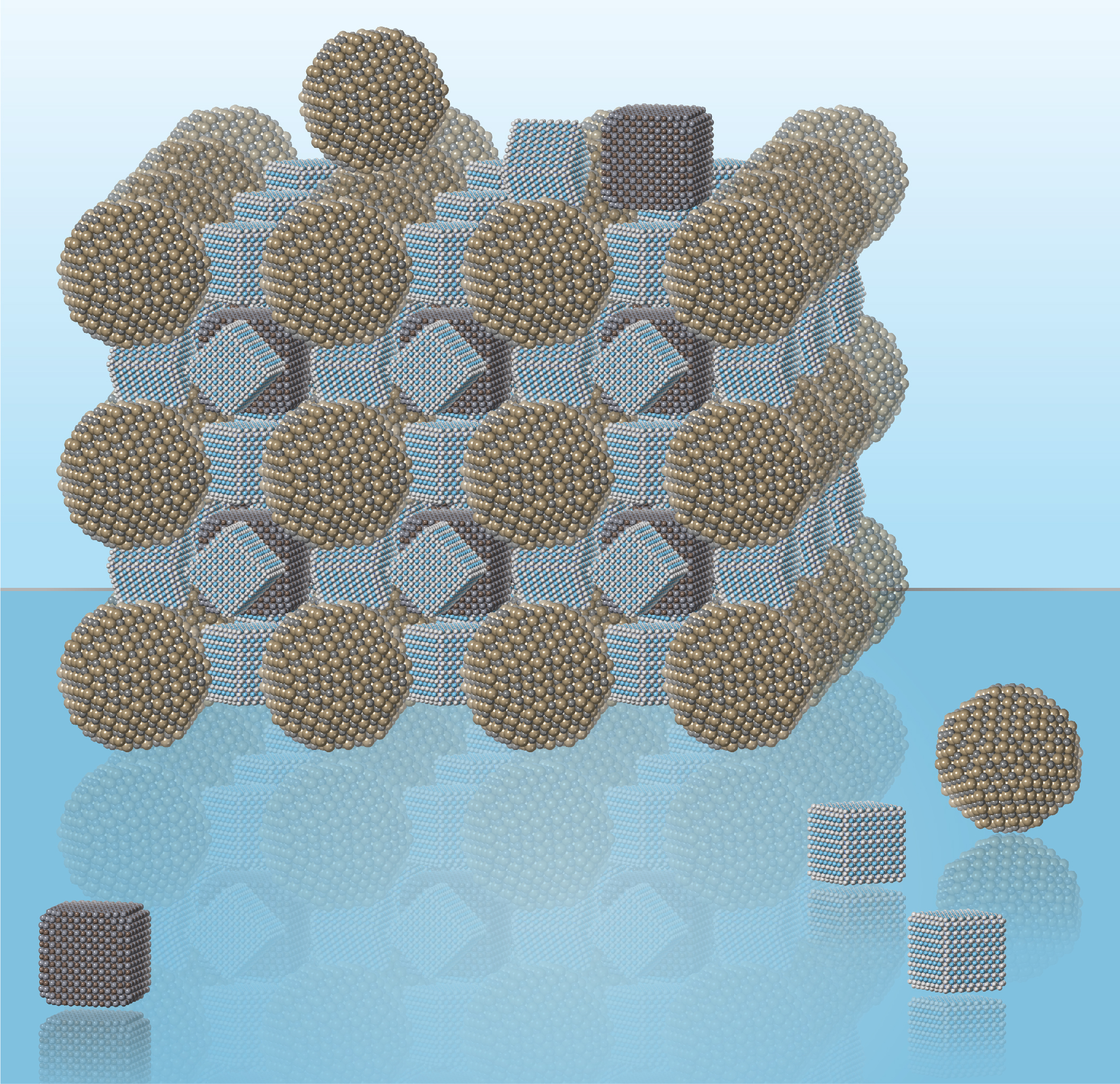Self-assembly of lead halide perovskite nanocubes into multicomponent nanocrystal superlattices
Colloidal lead halide perovskite nanocrystals (NCs) self-assembled into long-range ordered superlattices (SLs) with simple cubic packing of perovskite nanocubes have been shown to emit superfluorescent light, wherein coherent coupling among several NCs leads to collective emission, resulting in ultrafast bursts of photons. Co-assembly of perovskite NCs into multicomponent SLs with other building blocks might serve as a versatile platform for controlling their collective properties. We show that the use of cubic NCs instead of spherical ones changes the assembly outcome. CsPbBr3 nanocubes combined with spherical Fe3O4 or NaGdF4 NCs and truncated cuboid PbS NCs form binary SLs of six structure types, namely, NaCl-, AlB2-, CuAu- as well as uncommon to all-sphere assemblies novel AB2-, quasi-ternary ABO3- and ABO6-types. In these structures, the nanocubes retain orientational coherence. The co-assembly of CsPbBr3 nanocubes with larger disk-shaped LaF3 NCs (1.6 nm in thickness) results in the formation of six columnar structures with AB, AB2, AB4 and AB6 stoichiometry. In the systems with comparable dimensions of nanocubes (8.6 nm) and nanodisks (6.5–12.5 nm), other, non-columnar structures are observed, such as ReO3-type SL, featuring intimate intermixing and face-to-face alignment of disks and cubes. With large and thick NaGdF4 nanodisks, an orthorhombic SL resembling CaC2 structure with clusters of CsPbBr3 NCs was obtained. We also explore an on-liquid assembly method using glyceryl triacetate as a subphase that allows obtaining free-floating SL films comprising perovskite nanocrystals.

[2] Ihor Cherniukh, Gabriele Rainò, Taras V. Sekh, Chenglian Zhu, Yevhen Shynkarenko, Rohit Abraham John, Etsuki Kobiyama, Rainer F. Mahrt, Thilo Stöferle, Rolf Erni, Maksym V. Kovalenko, Maryna I. Bodnarchuk, ACS Nano 2021, 15, 16488-16500.
[3] Ihor Cherniukh, Taras V. Sekh, Gabriele Rainò, Olivia J. Ashton, Max Burian, Alex Travesset, Modestos Athanasiou, Andreas Manoli, Rohit Abraham John, Mariia Svyrydenko, Viktoriia Morad, Yevhen Shynkarenko, Federico Montanarella, Denys Naumenko, Heinz Amenitsch, Grigorios Itskos, Rainer F. Mahrt, Thilo Stöferle, Rolf Erni, Maksym V. Kovalenko, Maryna I. Bodnarchuk, ACS Nano, 2022 doi.org/10.1021/acsnano.1c10702